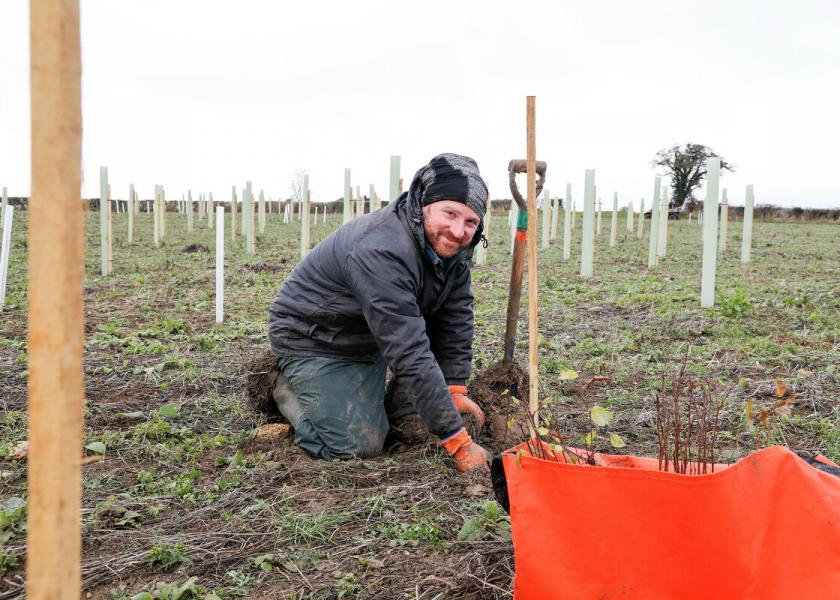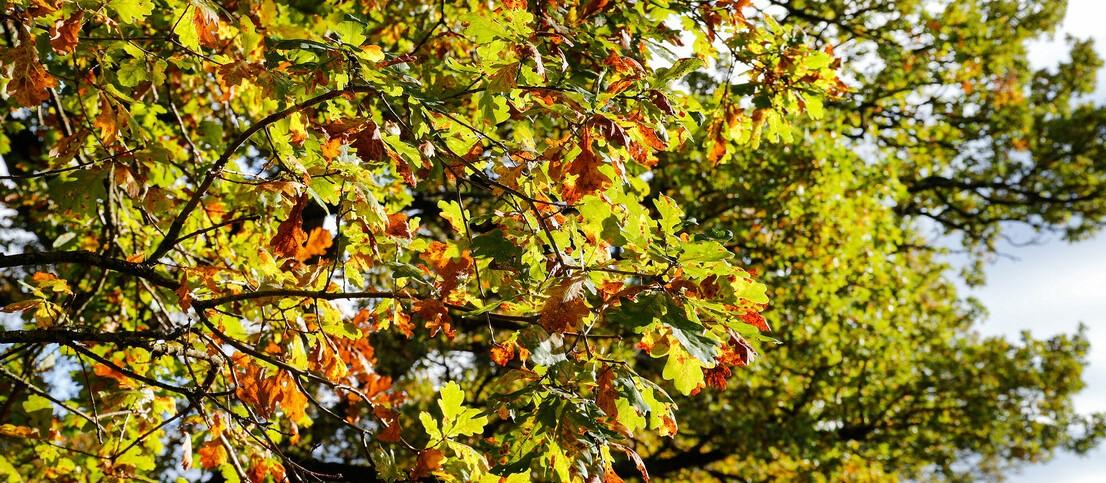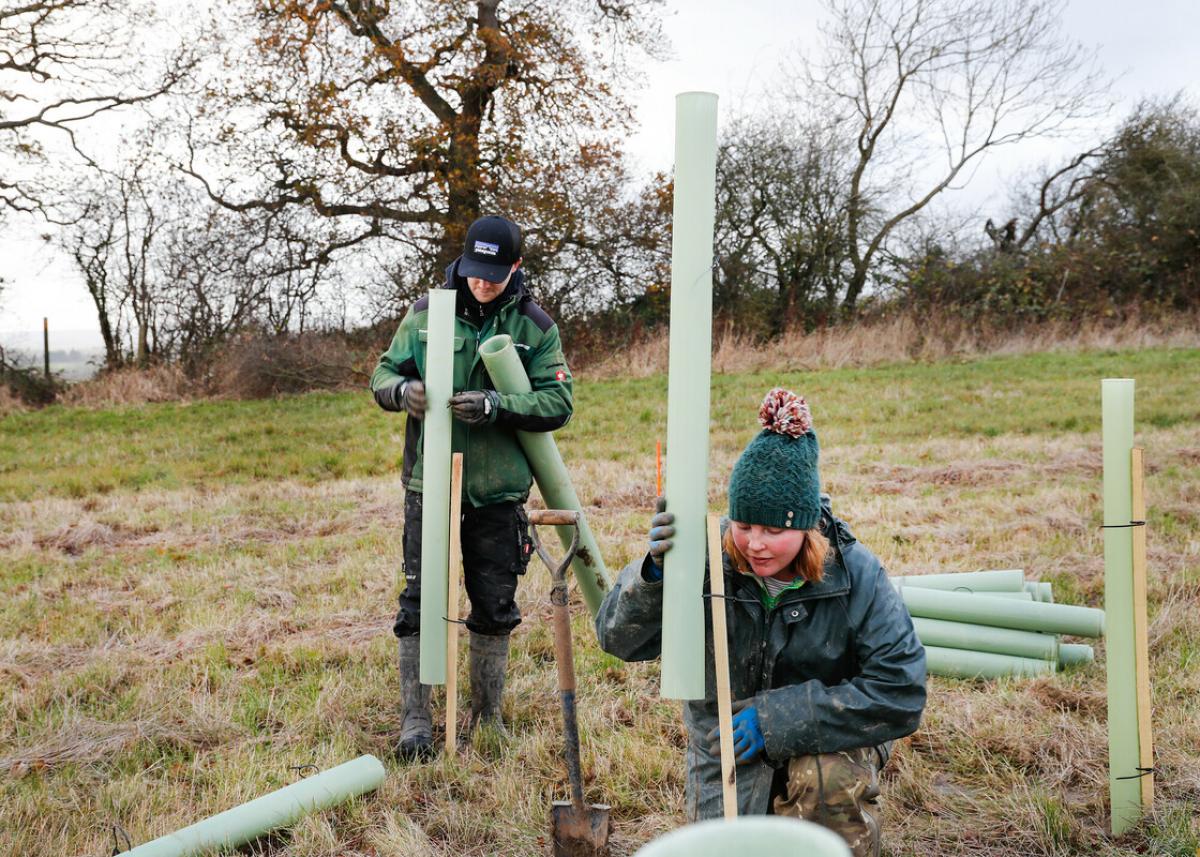Tree planting season has arrived
Before we delve into the intricacies of tree planting and how we do it, it is important to understand that although the Heart of England Forest prides itself on creating and conserving new woodland, we also take joy in forming and enhancing the mosaic of habitats across the Forest. As a charity, we see ourselves as much more than planters of trees.

Growing the Forest
Forests are complex ecosystems. That is why here at the Heart of England Forest we continue to diversify what we do. Planting native broadleaf trees is the predominant winter task, but we also continue to create and maintain our other extensive habitats that are home to fungi, mosses, lichens, and a wide variety of flora and fauna throughout the Forest. Our expert team works tirelessly to ensure that our work is ethical and directed towards mitigating climate change, as we aim to develop a sustainable ecosystem that will be here for life.

The importance of the right tree in the right place
When first deciding where best to plant trees, we consider the landscape and what is already present on site. There are areas where tree planting is not appropriate because of statutory designations such as features of cultural heritage, archaeological sites, and managed parkland landscapes. Sites of Special Scientific Interest (SSSI) may be designated for something other than woodland, and infrastructure wayleaves such as power lines and gas pipelines do not permit planting.
In deciding what species to plant where, we follow nature’s guidelines. Historically, many of the sites around the Forest were part of the ancient Forest of Arden and the Forest of Feckenham. We carry out studies before we reforest these areas to try and recreate what they may have looked like in the past.
We also recognise that it is not always the best option to plant a tree, because of other factors that improve the richness of the ecosystem. Instead, we develop some woodland with wide grassland rides, wetlands, and hedgerows, to create a mosaic of habitats. In fact, we estimate that up to 40% of our woodland at the Heart of England Forest does not actually have any trees on it. This is not only visually pleasing, and makes for a light and airy space to welcome people, but is planned to optimise the biodiversity and improve the environment.

What trees are we planting this season?
This year we will be planting around 120,000 trees, all native broadleaf species. The 23 tree and shrub species include:
- English oak
- Alder
- Birch
- Hornbeam
- Wild service
- Rowan
- Hazel
- Wild pear
Keep an eye on our social media channels throughout the tree planting season for details about these and the other species we are planting.

The tree planting process
Before we start planting new saplings, we revisit any losses that we have suffered from last year’s planting and replace them. If the trees have not decayed into the ground by themselves at this stage, we pull them out. We leave the dead trees in the planting area to decompose naturally and provide nutrition to the soil. There are several reasons for tree loss, including wildlife and extreme weather conditions. It used to be the case that the forestry industry routinely expected up to 10% mortality, but we usually only had in the region of 5% losses in the Heart of England Forest. This is changing due to climate change, but it is too early to know if the more extreme weather patterns we have been experiencing over the past four years are here to stay.
The new trees and saplings are held in heeling in beds until it is time to plant them out. We allocate them to fields, which are segmented into compartments, and follow a planting map to ensure the trees are in the right place.
Then it is time to bump in a stake, dig a hole, and place the tree in the ground. Usually, we place a guard around it for protection. However, this year in one of our planting sites there is a high chance of tree survival due to predictions from our team that monitor the site, as the area shows little evidence that there is browsing by wildlife, so we are planting the 30,000 trees on this site without protection.

Watch our Volunteer Manager, Jonathan, showing you how to plant a tree below:
How to get involved
On average a trained member of our forestry team can plant up to 120 trees a day by hand! However, with the aim of 120k trees this year - we need your help, sign up to become a volunteer today.
The Heart of England Forest is being created and nurtured for the environment, wildlife, and people. With your help, we can realise our 30,000 acre ambition and go even further, creating a magnificent Forest now, whilst leaving a wonderful legacy for the future.
If you want to know more about the work we do here at the Heart of England Forest, sign up to our monthly e-newsletter to find out more about specific areas of interest.



